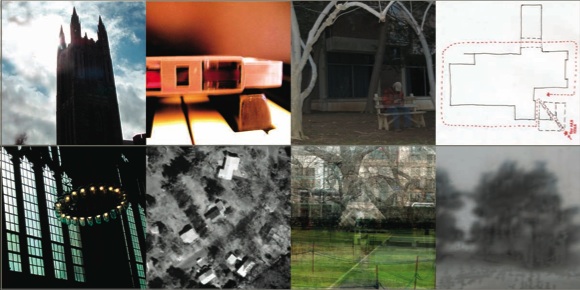
Two-day sound art festival and symposium. Organized and curated by myself and Seth Cluett.
“We hear while we are in the womb, long before we see. For the rest of our lives, hearing essentially precedes the rest of the sensorium, as we move through a world of sonic fragments which affect us phenomenally and emotionally but of which we are often unaware. These fragments are mediated by our environment, our bodies, our individual and collective memories, and the technologies that pervade contemporary life: from books to radio to television to iPods. Through these mediations sounds give rise to stories, which though they might be as hazy as an aura, begin to narrate the world we move through as they themselves move through our bodies and minds.”
Sonic Fragments was a two-day sound art festival and symposium convening an international group of scholars and practitioners to explore the roles of narrative and mediation in art practices that engage sound as a material.
It included three panel discussions as well as an exhibition of audio-works for portable music players made expressly for the geography, architecture, and social spaces of the Princeton University campus. Thirty iPods and corresponding maps were made available for check-out from Princeton’s Mendel Music Library. They can still, along with a map, be downloaded here, if you’d like to meander through campus.
Exhibition artists included William Basinski, Betsey Biggs, Jon Brumit, Michael Bullock, Seth Cluett, M.R. Daniel, Michael Early, Brent Fariss, Alan Goodrich, Johanna Hallsten, Brenda Hutchinson, John Kannenberg, Kenneth Kirschner, Leonel Kaplan, Tianna Kennedy, Stephan Moore, Preston Poe, Leah Rico, Jennifer Schmidt, Michael Schumacher, Scott Smallwood, Stephen Spera, Debra Swack, and Samson Young.
The first panel consisted of musician and sound artist William Basinski, whose melancholy minimal electronic music has achieved critical acclaim; artist Jon Brumit, whose Neighborhood Public Radio project was featured in the 2008 Whitney Biennial; multimedia artist Brenda Hutchinson, who led sunrise and sunset bell-ringings throughout the festival; as well as sound artist Michael J. Schumacher, founder of New York’s Diapason Gallery.
The second panel took up the notion of narrative as it relates to sound practices. Kristin Oppenheim’s spare and hypnotic sound installations invoke layers of personal memory, while Stephen Vitiello’s work transforms incidental atmospheric noises into mesmerizing soundscapes that alter our perception of the surrounding environment. Mendi + Keith Obadike collaborate on interdisciplinary projects investigating race, history and identity, and Thomas Levin, a curator and cultural theorist, focuses on sound technologies and issues of surveillance in media practices.
The symposium’s third and final panel addressed issues of mediation in sound art. Rubén Gallo spoke about Mexican sound artist Taniel Morales’s Pirate Radio. Ed Osborn presented his kinetic and audible sound installations, while Camille Norment shared her artistic practice, which extends the fine arts into extra-disciplinary realms such as scientific research, city planning, and interaction design. Tianna Kennedy, former program director of Brooklyn’s free103point9 transmission arts network and a participating artist in the festival, discussed issues related to transmission, participatory practice and social sculpture.
Sonic Fragments was organized by Betsey Biggs and Seth Cluett, and sponsored by the Princeton University Department of Music, The Peter B. Lewis Center for the Performing Arts, The Graduate School, The Sound Lab research group in the Department of Computer Science, The Aesthetics and Media Track in the Department of German, The Program in Media and Modernity, The Center for Arts and Cultural Policy Studies, and the Merce Cunningham Dance Company.